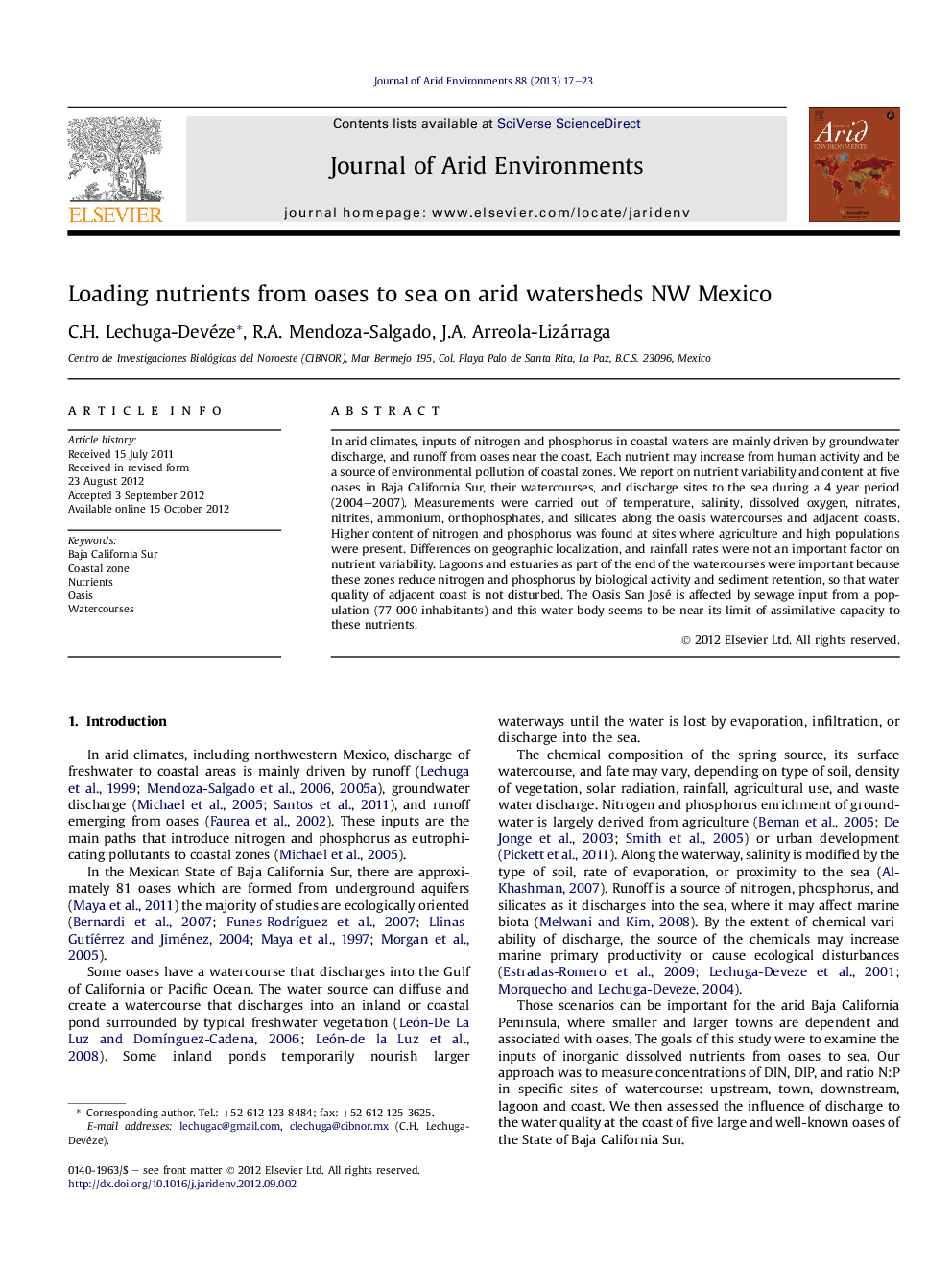| Article ID | Journal | Published Year | Pages | File Type |
|---|---|---|---|---|
| 4393284 | Journal of Arid Environments | 2013 | 7 Pages |
In arid climates, inputs of nitrogen and phosphorus in coastal waters are mainly driven by groundwater discharge, and runoff from oases near the coast. Each nutrient may increase from human activity and be a source of environmental pollution of coastal zones. We report on nutrient variability and content at five oases in Baja California Sur, their watercourses, and discharge sites to the sea during a 4 year period (2004–2007). Measurements were carried out of temperature, salinity, dissolved oxygen, nitrates, nitrites, ammonium, orthophosphates, and silicates along the oasis watercourses and adjacent coasts. Higher content of nitrogen and phosphorus was found at sites where agriculture and high populations were present. Differences on geographic localization, and rainfall rates were not an important factor on nutrient variability. Lagoons and estuaries as part of the end of the watercourses were important because these zones reduce nitrogen and phosphorus by biological activity and sediment retention, so that water quality of adjacent coast is not disturbed. The Oasis San José is affected by sewage input from a population (77 000 inhabitants) and this water body seems to be near its limit of assimilative capacity to these nutrients.
► The nutrient variability of oases and watercourses is mainly influenced by adjacent settlements. ► The ponds are efficient systems to reduce the excess of nitrogen and phosphorus. ► The water quality indices of the coastal zone are good. ► The pond of Oasis San José may be losing some of its depurating characteristics. ► Further monitoring of this Oasis San José is recommended.
